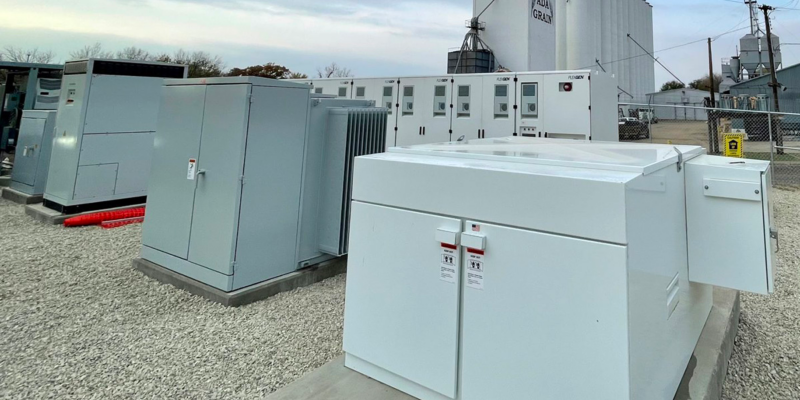Tar Heel Co-ops Add Battery Storage To Boost Grid Resilience

In January, North Carolina’s Electric Cooperatives announced plans to boost the resiliency and reliability of its grid infrastructure by installing 10 battery energy storage projects in rural communities across the state.
Representing 40 megawatts (MW) of power, the batteries will be sited at electric cooperative substations and will be charged when demand for electricity is low and discharged during periods of peak demand. Installations have already begun, with commercial operation anticipated in the summer.
An effort of the state’s electric cooperatives in partnership with their generation and transmission provider, North Carolina Electric Membership Corporation, the initiative is expected to both enhance electric system reliability and resilience over the lifetime of the batteries.
“The substation batteries complement our growing collection of distributed energy resources, which cooperatives are integrating into the grid and deploying at scale,” Jennifer Eberhart, the N.C. co-ops’ director of member engagement, said. “It provides significant benefits for enhanced reliability and grid resilience and also allows us to work together to, for the first time, integrate stand-alone battery energy storage into our fleet of assets and to learn more about how that technology can be utilized in the future to meet our goals.”
Battery Storage Investments will Improve the Grid
The battery storage project is part of a series of distributed energy investments the N.C. co-ops are making to improve the grid and support their Brighter Future vision of achieving net-zero carbon emissions by 2050 (see “North Carolina Co-ops Are Building a Brighter Future,” Solutions News Bulletin, Sept. 8, 2020).
“Our members’ needs and expectations form the bedrock of all future planning, and our members are telling us that they want reliable electricity, first and foremost, but they also want it to be affordable and sustainable,” N.C. Electric Cooperatives’ Chief Operating Officer Amadou Fall said. “Our state’s co-ops have made great progress and are demonstrating leadership in developing innovative solutions that engage our members and are an important piece of a Brighter Future.”
In addition to the substation batteries, distributed energy projects around the state include five microgrids, 19 community solar farms, a statewide electric vehicle charging network, and thousands of smart thermostats and water heater controls through the Connect to Save demand-response program.
As a Distribution Operator—a single entity that monitors and coordinates energy resources across the grid—North Carolina’s Electric Cooperatives now manages about 500 MW of various distributed energy resources.
“North Carolina’s electric cooperatives are collectively managing these resources for enhanced service to members through improved grid resilience and reliability while also facilitating greater coordination with transmission operators,” Fall explained.
Benefits of Battery Energy Storage
FlexGen was selected to construct and install the battery storage systems because of its advanced software that integrates into the cooperatives’ Distribution Operator technology.
The cooperatives are actively working to integrate renewables into their array of power sources, and battery storage could make renewable energy a more accessible option.
“As cooperatives work to reduce carbon emissions, and especially as more intermittent resources like solar are integrated into our systems, we believe that battery energy storage will be increasingly important to harness the benefits of renewable generation resources,” Eberhart said. “Battery storage is a flexible resource, and its future use cases could significantly impact the way we manage our grids. It is an area we will continue to explore and evaluate.”
Extreme Weather Events
In addition to general improvement in day-to-day grid management, battery storage and other distributed energy resources are expected to provide improved resilience from periodic extreme weather events.
“We know that resilience is critical as our state often experiences hurricanes and severe storms, and adding new energy technologies allows us to proactively reduce disruptions and enhance our response measures when outages do occur,” Fall said.
Both Wall Street and Main Street investors are paying increased attention to energy resilience since climate risk is becoming not just an environmental issue, but one that has a direct impact on a company’s financial standing and reputation (see “Extreme Weather Events Drive Need To Enhance Resilience,” Solutions News Bulletin, Feb. 14, 2022).
CFC will soon release a special report, “Building Energy Resilience: How Electric Cooperatives Are Mitigating Extreme Weather Effects.”